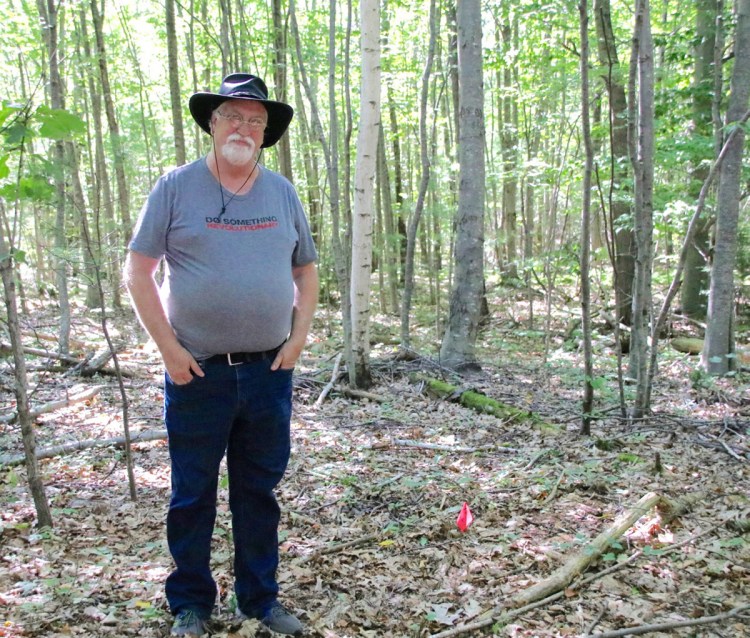SANFORD — Sometimes, to know where you’ve been, digging is involved. A digger can unearth things – such as pottery shards, old clay pipes, buttons or beads or bullets or hand-wrought nails.
This weekend, archaeologists and volunteers will conduct a dig in south Sanford, hoping to find evidence of a garrison built 24 years before the area known as Phillipstown was incorporated as Sanford in 1768.
A number of garrisons were built at the time, as unrest between Colonists and Native Americans proliferated during the lengthy period referred to as the French and Indian Wars. King George’s War was one of them and erupted in 1744 – a year after the General Court of Massachusetts appropriated 1,280 pounds to defend the eastern settlements. In the same year the war broke out, 100 British pounds were appropriated by the Massachusetts General Court to build a garrison at Phillipstown, according Edwin Emery’s “History of Sanford, Maine 1660 to 1900.”
Emery wrote that the order said the garrison was to be built of stockade or square timber, but which was used is unknown.
“It was occupied until 1763 and was listed on a British map in 1774,” said retired architect and history buff Dana Peterson, who formulated the idea of a dig to help enhance the Sanford 250th Celebration. “And it was probably here through the Revolution.”
Peterson has perused Emery’s account carefully and traced the deeds. He is speaking of the possible garrison location only in general terms at the moment to discourage possible treasure hunters, and said it is located between the roundabout in south Sanford and Sanford Seacoast Regional Airport. The property is owned by a number of families, who have given permission for the operation.
The weekend effort will not be a full-scale dig.
Archaeologists, archaeological interns and volunteers will excavate, with hand tools, a series of pits measuring two feet by two feet, about 10 feet apart. They’ll dig until archaeologists recognize layers of dirt consistent with the 1700s, and then they’ll proceed carefully, sifting soil in specially designed screens and examining what is left behind.
Peterson said the Phillipstown garrison was among a line of frontier forts connected by a trail used by scouts as they traveled from garrison to garrison, watching for possible trouble from the north.
“I suspect the next garrison to the west was Fort Lovell on Ossipee Lake in New Hampshire, and the next to the east being the Saco Truck House in Buxton, as all three of these locations appear on a British map dated 1774,” Peterson said in correspondence with archaeologist Arthur Anderson, a visiting assistant lecturer at the University of New England. “It is not known when it was abandoned.”
There will be a training session, for volunteers, led by Anderson and another archaeologist, Robert Lund, on Saturday morning at the Sanford Springvale Historical Museum, and then the group will head out to the site. Peterson is hoping for 15 to 25 volunteers to augment the work of the archaeologists and several archaeological interns.
“It is an interesting project and I hope those digging turn up evidence of the garrison’s location,” said Harland Eastman, president of the Sanford-Springvale Historical Society. Eastman said that on the weekend after the dig, participants will sort out what they have found at the museum, and that anything significant and of reasonable size can be stored there.
The Sanford City Council has appropriated $2,000 toward the effort to locate the garrison.
“This is interesting,” Councilor Joseph Hanslip said when the council unanimously authorized the expenditure.
Peterson has been the historian at North Parish Congregational Church for the last several years and now that he is retired from the University of New Hampshire, can devote more time to his passion for the past. He comes by it naturally – his mother was a history teacher. At the church, he has researched early members of the congregation, a “people in the pews” sort of work, wrote about members who served their country in World War II and is embarking on another research project about the Revolutionary War.
And the garrison?
“If we can locate the site, we can preserve it for the future,” he said.
Anyone interested in volunteering can contact Peterson at: maniacs24@metrocast.net.
Tammy Wells can be contacted at 282-1535, ext. 327 or at:
twells@journaltribune.com.
Copy the Story LinkSend questions/comments to the editors.



Success. Please wait for the page to reload. If the page does not reload within 5 seconds, please refresh the page.
Enter your email and password to access comments.
Hi, to comment on stories you must . This profile is in addition to your subscription and website login.
Already have a commenting profile? .
Invalid username/password.
Please check your email to confirm and complete your registration.
Only subscribers are eligible to post comments. Please subscribe or login first for digital access. Here’s why.
Use the form below to reset your password. When you've submitted your account email, we will send an email with a reset code.